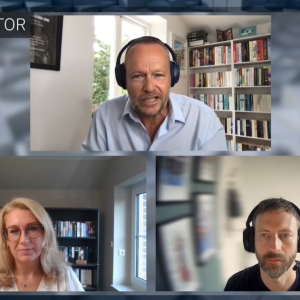Bowstreet’s flagship product, Portlet Factory, provides tools for building portlets that populate Java-based portals supporting the JSR-168 Java standard.
Bowstreet currently has technical relationships in place with IBM and Oracle for its portlets to populate WebSphere Portal and Oracle 10g Portal, respectively, without need for additional coding.
Bowstreet claims its portal development tools are easier to use, and therefore, targeted for business analysts as opposed to software developers.
We bring Microsoft ease to the power of Java, claimed Michael George, chief executive of Bowstreet, which claims its portal development tools improve development productivity by a factor of 2 to 10 times.
Portal Factory complements and overlaps IBM’s portal and web services integration offerings from WebSphere, Lotus and Rational brands.
Like Rational, Bowstreet offers portal development tools, but they are higher level. For instance, Portlet Factory provides role-based, dynamic portlet design with predefined end user templates. Conversely, Rational offers a more robust, general-purpose software design, build, test, and deployment environment that can be applied to portlets.
Like WebSphere Business Integration (WebSphere BI), Portlet Factory has adapters to leading enterprise sources like SAP, Siebel, Domino, Oracle e-Business Suite, spreadsheets, and web services, but they are targeted at placing information from multiple sources onto the same screen, rather than integrating them transactional.
Both companies are hardly strangers to each other. They already have a joint customer base exceeding 100 accounts, over half of which are in the Global 2000, such as Bayer and Gillette. Additionally, IBM reps have been reselling Bowstreet’s products on IBM contracts for several years. And 85% of Bowstreet’s customers also use Rational tools.
The common lineage goes further. Frank Moss, founder of Tivoli, was also a board member during Bowstreet’s early days. And Bowstreet’s headquarters in Tewksbury, Massachusetts are just a dozen miles down the road from the main development center for Workplace.
The company struggled during its first few years as a more general-purpose web services-based composite application integration engine. Founded in 1998, its technologies predated the web services standards that later emerged. The company underwent a management change in 2003, shifting gears towards portal tools.
IBM views the Portal Factory technology as the way to extend the business views provided by Lotus Workplace, its J2EE-based successor to Domino.
According to Mike Rhodin, general manager of Workplace, Portal and Collaboration, Bowstreet adds more flexible dynamic user profiling capabilities that are useful for single sign portal privileges. And like Workplace, it’s meant to be configured by business analysts, rather than software developers.
But Rhodin concedes that in some cases there will be overlap between Bowstreet and WebSphere technologies that will eventually shake out.
As you watch evolution of the ESB [enterprise services buss] as a foundation element for SOA, you’ll start to see more rationalization of the connectors and adapters, Rhodin said. But this [acquisition] is about feeding value to clients today.
For now, IBM will keep selling Bowstreet Portal Factory under its own contracts and expects to continue honoring Bowstreet’s Oracle agreements.
We called Oracle yesterday and let them know what was going on, said Rhodin. Initially, the feedback was that they liked the technology, [and they gave] no indications of any plans to change that going forward. We’re not going to do anything overt.
At press time, Oracle was unavailable for comment.
The first rebranding will occur in Q2 2006, with tighter tooling integration. IBM will provide a more complete product roadmap at a later date.






